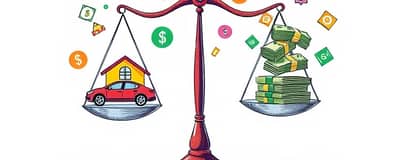In an era of evolving financial opportunities, personal loans have become indispensable tools for achieving life goals—whether consolidating debt, covering unexpected expenses, or funding a dream renovation. Yet navigating interest rates, fees, and lender requirements can feel overwhelming without a clear roadmap.
This guide distills the essential data and strategies you need to make informed borrowing decisions. From understanding average APRs in 2025 to unlocking the lowest rates available, you’ll discover expert insights for mastering the personal loan landscape.
Understanding the Current Personal Loan Landscape
The personal loan environment in 2025 reflects a broad spectrum of rates and options. The overall average APR hovers around 20.78%, with weekly fluctuations influenced by market conditions and lender policies.
Borrowers with strong credit profiles (FICO 700+) can often secure rates near 12.64% APR, while individuals with lower scores may face rates above 30%. Credit unions maintain a national average of 10.75% APR for three-year terms—legally capped at 18%—whereas banks average 12.03% APR for similar loans.
Typical Uses for Personal Loans
Personal loans serve a variety of practical purposes. Many borrowers leverage them to consolidate existing high-interest debts, simplifying repayment into a single monthly obligation. Others tap into funds for life events or urgent needs.
- Debt consolidation to lower monthly interest burden
- Home renovations and improvement projects
- Medical or dental bills requiring prompt payment
- Weddings, family celebrations, and special events
- Tax payments or emergency expenses
Key Factors That Affect Personal Loan Rates
One of the primary determinants of your APR is your creditworthiness and payment history. Lenders reward on-time payments and low delinquency rates with more competitive offers.
High credit scores often unlock single-digit to low-teens APRs, whereas scores below 650 can push rates above 30%. Maintaining stable income and a low debt-to-income ratio also contributes to more favorable repayment terms.
Loan characteristics—such as term length and amount—play a significant role. Shorter terms typically yield lower interest rates but higher monthly payments, while longer durations may increase total interest costs. Larger loan amounts sometimes qualify for better APRs but often require stricter underwriting.
Finally, your choice of lender—bank, credit union, or online provider—can sway your rate. Credit unions are renowned for unique member-focused pricing advantages, whereas online lenders deliver rapid funding at the expense of wider rate variability. Secured loans may offer lower APRs by reducing lender risk through collateral.
Comparing Major Lenders: Rates, Terms, and Requirements
When shopping for a personal loan, it helps to compare prominent lenders side by side. Consider APR ranges, minimum credit score requirements, and loan amount limits before making a decision.
This table highlights top institutions—each offering unique advantages in rate, flexibility, and membership requirements.
How to Secure the Lowest Possible Rates
Securing a competitive interest rate requires proactive steps. Begin by reviewing your credit report to confirm accuracy and identify areas for improvement.
Before you apply, focus on improve credit score and history by paying down revolving balances and establishing consistent payment patterns.
- Check your credit reports for errors or inaccuracies impacting score.
- Maintain a low debt-to-income ratio by using less than 30% of available credit.
- Consider a co-signer to access lower rates and larger loan amounts.
- Explore credit union options for unique member-focused pricing advantages.
- Use prequalification tools to compare APRs without affecting your score.
Setting up automatically reduce APR through autopay is another effective strategy with many lenders, often shaving 0.25% off your rate.
Weighing the Pros and Cons of Loan Options
Low-interest loans offer the benefit of smaller total interest cost, predictable monthly payments, and the potential to boost your credit score through on-time repayment. However, they usually demand stronger credit profiles and may involve stricter approval criteria.
High-interest loans provide faster access for borrowers with spotty credit but come with higher borrowing costs and an increased risk of falling into a debt cycle. Always compare APR (which includes fees) rather than just the nominal interest rate.
Smart Strategies for Responsible Borrowing
Responsible borrowing goes beyond securing the lowest APR. Review all loan terms—origination fees, late charges, and prepayment penalties—before signing. Some lenders charge up to 9.99% in origination fees, so factor this into your effective APR.
Budget carefully and allocate payments to principal whenever possible to shorten repayment duration and reduce total interest. Stay on top of due dates, and contact your lender immediately if financial hardship arises to explore hardship plans or temporary modifications.
Guard against predatory lending by confirming state rate caps, verifying lender licenses, and scrutinizing any advertised rates above 36% APR. Predatory offers can exceed 99% APR, trapping borrowers in cycles of unaffordable debt.
Final Thoughts and Next Steps
Equipped with an understanding of average rates, key rate drivers, and practical qualification tips, you can approach personal loan shopping with confidence. Take the time to gather your financial documents, check your credit, and explore multiple lenders through soft inquiries.
Even a 1% reduction in your APR can translate into noticeable long-term savings and value over the life of your loan. Begin your journey today, and unlock borrowing power that aligns with your goals and financial well-being.














